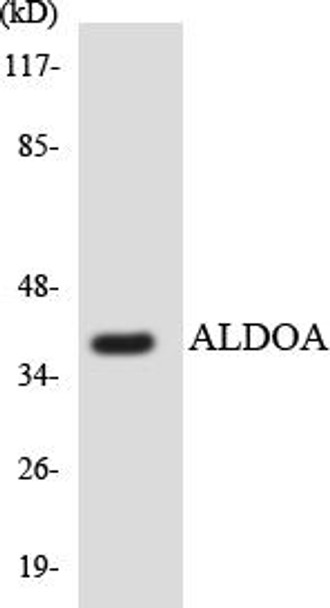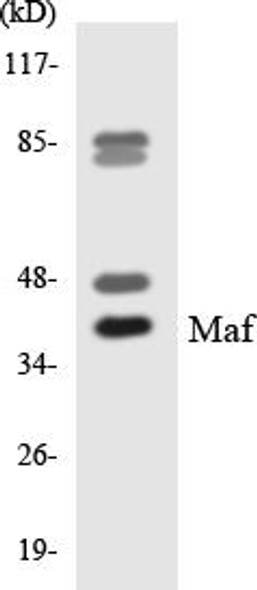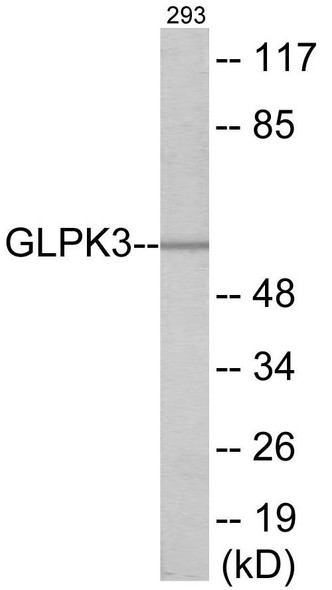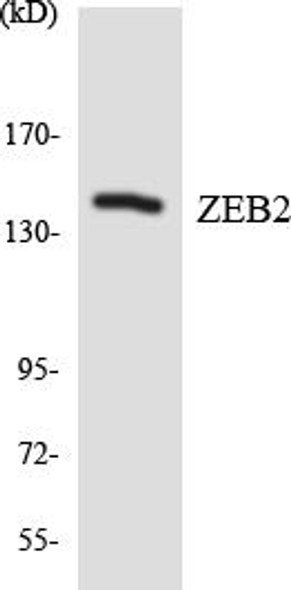ALDOA Colorimetric Cell-Based ELISA
- SKU:
- CBCAB00971
- Product Type:
- ELISA Kit
- ELISA Type:
- Cell Based
- Research Area:
- Metabolism
- Reactivity:
- Human
- Mouse
- Rat
- Detection Method:
- Colorimetric
Description
ALDOA Colorimetric Cell-Based ELISA
The ALDOA Colorimetric Cell-Based ELISA Kit is specifically designed for the accurate quantification of ALDOA (Aldolase A) levels in cell lysates and tissue homogenates. This kit offers high sensitivity and specificity, providing researchers with reliable and reproducible results for their studies.ALDOA is a key enzyme in glycolysis, playing a crucial role in energy production and metabolism in cells. Dysregulation of ALDOA has been associated with various diseases, including cancer, metabolic disorders, and neurodegenerative diseases.
Therefore, measuring ALDOA levels can provide valuable insights into the underlying mechanisms of these conditions and aid in the development of potential therapies.With its user-friendly protocol and high-performance characteristics, the ALDOA Colorimetric Cell-Based ELISA Kit is an indispensable tool for researchers investigating the role of ALDOA in health and disease.
| Product Name: | ALDOA Colorimetric Cell-Based ELISA |
| Product Code: | CBCAB00971 |
| ELISA Type: | Cell-Based |
| Target: | ALDOA |
| Reactivity: | Human, Mouse, Rat |
| Dynamic Range: | > 5000 Cells |
| Detection Method: | Colorimetric 450 nmStorage/Stability:4°C/6 Months |
| Format: | 96-Well Microplate |
The ALDOA Colorimetric Cell-Based ELISA Kit is a convenient, lysate-free, high throughput and sensitive assay kit that can detect ALDOA protein expression profile in cells. The kit can be used for measuring the relative amounts of ALDOA in cultured cells as well as screening for the effects that various treatments, inhibitors (ie siRNA or chemicals), or activators have on ALDOA.
Qualitative determination of ALDOA concentration is achieved by an indirect ELISA format. In essence, ALDOA is captured by ALDOA-specific primary antibodies while the HRP-conjugated secondary antibodies bind the Fc region of the primary antibody. Through this binding, the HRP enzyme conjugated to the secondary antibody can catalyze a colorimetric reaction upon substrate addition. Due to the qualitative nature of the Cell-Based ELISA, multiple normalization methods are needed:
| 1. | A monoclonal antibody specific for human GAPDH is included to serve as an internal positive control in normalizing the target absorbance values. |
| 2. | Following the colorimetric measurement of HRP activity via substrate addition, the Crystal Violet whole-cell staining method may be used to determine cell density. After staining, the results can be analysed by normalizing the absorbance values to cell amounts, by which the plating difference can be adjusted. |
| Database Information: | Gene ID: 226, UniProt ID: P04075, OMIM: 103850, Unigene: Hs.513490 |
| Gene Symbol: | ALDOA |
| Sub Type: | None |
| UniProt Protein Function: | ALDOA: a glycolytic enzyme that catalyzes D-fructose 1,6-bisphosphate -> glycerone phosphate + D-glyceraldehyde 3-phosphate. Three forms of aldolase are found in vertebrates - aldolase A in muscle, aldolase B in liver and aldolase C in brain. |
| UniProt Protein Details: | Protein type:Carbohydrate Metabolism - glycolysis and gluconeogenesis; EC 4.1.2.13; Carbohydrate Metabolism - fructose and mannose; Lyase; Carbohydrate Metabolism - pentose phosphate pathway; Mitochondrial Chromosomal Location of Human Ortholog: 16p11.2 Cellular Component: I band; extracellular space; membrane; extracellular region; M band; cytosol; nucleus; actin cytoskeleton Molecular Function:tubulin binding; identical protein binding; protein binding; cytoskeletal protein binding; fructose-bisphosphate aldolase activity; actin binding Biological Process: platelet activation; striated muscle contraction; glycolysis; glucose metabolic process; actin filament organization; pathogenesis; protein homotetramerization; gluconeogenesis; muscle maintenance; regulation of cell shape; fructose 1,6-bisphosphate metabolic process; platelet degranulation; ATP biosynthetic process; carbohydrate metabolic process; blood coagulation; fructose metabolic process Disease: Glycogen Storage Disease Xii |
| NCBI Summary: | The protein encoded by this gene, Aldolase A (fructose-bisphosphate aldolase), is a glycolytic enzyme that catalyzes the reversible conversion of fructose-1,6-bisphosphate to glyceraldehyde 3-phosphate and dihydroxyacetone phosphate. Three aldolase isozymes (A, B, and C), encoded by three different genes, are differentially expressed during development. Aldolase A is found in the developing embryo and is produced in even greater amounts in adult muscle. Aldolase A expression is repressed in adult liver, kidney and intestine and similar to aldolase C levels in brain and other nervous tissue. Aldolase A deficiency has been associated with myopathy and hemolytic anemia. Alternative splicing and alternative promoter usage results in multiple transcript variants. Related pseudogenes have been identified on chromosomes 3 and 10. [provided by RefSeq, Aug 2011] |
| UniProt Code: | P04075 |
| NCBI GenInfo Identifier: | 113606 |
| NCBI Gene ID: | 226 |
| NCBI Accession: | P04075.2 |
| UniProt Secondary Accession: | P04075,Q6FH76, Q6FI10, Q96B15, Q9BWD9, Q9UCN2, B4DXI7 |
| UniProt Related Accession: | P04075 |
| Molecular Weight: | 364 |
| NCBI Full Name: | Fructose-bisphosphate aldolase A |
| NCBI Synonym Full Names: | aldolase A, fructose-bisphosphate |
| NCBI Official Symbol: | ALDOA |
| NCBI Official Synonym Symbols: | ALDA; GSD12; HEL-S-87p |
| NCBI Protein Information: | fructose-bisphosphate aldolase A; muscle-type aldolase; lung cancer antigen NY-LU-1; fructose-1,6-bisphosphate triosephosphate-lyase; epididymis secretory sperm binding protein Li 87p |
| UniProt Protein Name: | Fructose-bisphosphate aldolase A |
| UniProt Synonym Protein Names: | Lung cancer antigen NY-LU-1; Muscle-type aldolase |
| Protein Family: | Fructose-bisphosphate aldolase |
| UniProt Gene Name: | ALDOA |
| UniProt Entry Name: | ALDOA_HUMAN |
| Component | Quantity |
| 96-Well Cell Culture Clear-Bottom Microplate | 2 plates |
| 10X TBS | 24 mL |
| Quenching Buffer | 24 mL |
| Blocking Buffer | 50 mL |
| 15X Wash Buffer | 50 mL |
| Primary Antibody Diluent | 12 mL |
| 100x Anti-Phospho Target Antibody | 60 µL |
| 100x Anti-Target Antibody | 60 µL |
| Anti-GAPDH Antibody | 60 µL |
| HRP-Conjugated Anti-Rabbit IgG Antibody | 12 mL |
| HRP-Conjugated Anti-Mouse IgG Antibody | 12 mL |
| SDS Solution | 12 mL |
| Stop Solution | 24 mL |
| Ready-to-Use Substrate | 12 mL |
| Crystal Violet Solution | 12 mL |
| Adhesive Plate Seals | 2 seals |
The following materials and/or equipment are NOT provided in this kit but are necessary to successfully conduct the experiment:
- Microplate reader able to measure absorbance at 450 nm and/or 595 nm for Crystal Violet Cell Staining (Optional)
- Micropipettes with capability of measuring volumes ranging from 1 µL to 1 ml
- 37% formaldehyde (Sigma Cat# F-8775) or formaldehyde from other sources
- Squirt bottle, manifold dispenser, multichannel pipette reservoir or automated microplate washer
- Graph paper or computer software capable of generating or displaying logarithmic functions
- Absorbent papers or vacuum aspirator
- Test tubes or microfuge tubes capable of storing ≥1 ml
- Poly-L-Lysine (Sigma Cat# P4832 for suspension cells)
- Orbital shaker (optional)
- Deionized or sterile water
*Note: Protocols are specific to each batch/lot. For the correct instructions please follow the protocol included in your kit.
| Step | Procedure |
| 1. | Seed 200 µL of 20,000 adherent cells in culture medium in each well of a 96-well plate. The plates included in the kit are sterile and treated for cell culture. For suspension cells and loosely attached cells, coat the plates with 100 µL of 10 µg/ml Poly-L-Lysine (not included) to each well of a 96-well plate for 30 minutes at 37°C prior to adding cells. |
| 2. | Incubate the cells for overnight at 37°C, 5% CO2. |
| 3. | Treat the cells as desired. |
| 4. | Remove the cell culture medium and rinse with 200 µL of 1x TBS, twice. |
| 5. | Fix the cells by incubating with 100 µL of Fixing Solution for 20 minutes at room temperature. The 4% formaldehyde is used for adherent cells and 8% formaldehyde is used for suspension cells and loosely attached cells. |
| 6. | Remove the Fixing Solution and wash the plate 3 times with 200 µL 1x Wash Buffer for five minutes each time with gentle shaking on the orbital shaker. The plate can be stored at 4°C for a week. |
| 7. | Add 100 µL of Quenching Buffer and incubate for 20 minutes at room temperature. |
| 8. | Wash the plate 3 times with 1x Wash Buffer for 5 minutes each time. |
| 9. | Add 200 µL of Blocking Buffer and incubate for 1 hour at room temperature. |
| 10. | Wash 3 times with 200 µL of 1x Wash Buffer for 5 minutes each time. |
| 11. | Add 50 µL of 1x primary antibodies (Anti-ALDOA Antibody and/or Anti-GAPDH Antibody) to the corresponding wells, cover with Parafilm and incubate for 16 hours (overnight) at 4°C. If the target expression is known to be high, incubate for 2 hours at room temperature. |
| 12. | Wash 3 times with 200 µL of 1x Wash Buffer for 5 minutes each time. |
| 13. | Add 50 µL of 1x secondary antibodies (HRP-Conjugated AntiRabbit IgG Antibody or HRP-Conjugated Anti-Mouse IgG Antibody) to corresponding wells and incubate for 1.5 hours at room temperature. |
| 14. | Wash 3 times with 200 µL of 1x Wash Buffer for 5 minutes each time. |
| 15. | Add 50 µL of Ready-to-Use Substrate to each well and incubate for 30 minutes at room temperature in the dark. |
| 16. | Add 50 µL of Stop Solution to each well and read OD at 450 nm immediately using the microplate reader. |
(Additional Crystal Violet staining may be performed if desired – details of this may be found in the kit technical manual.)










